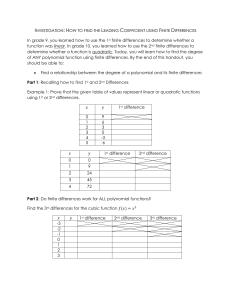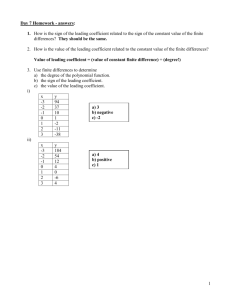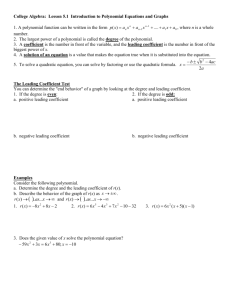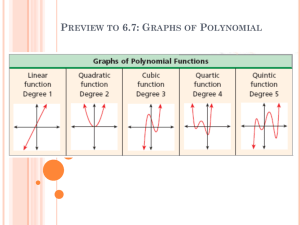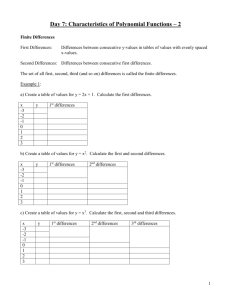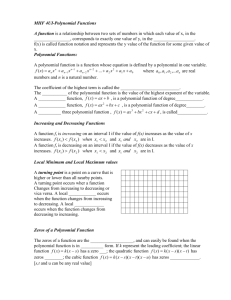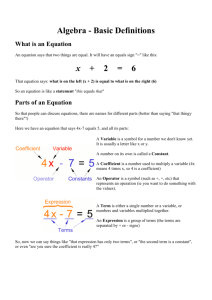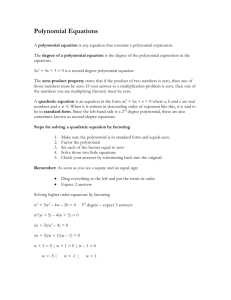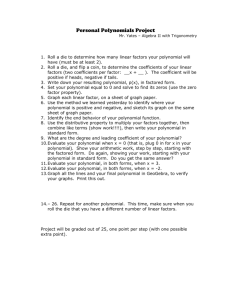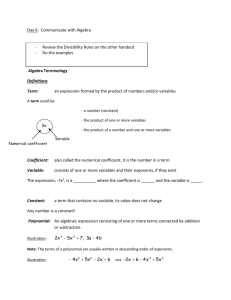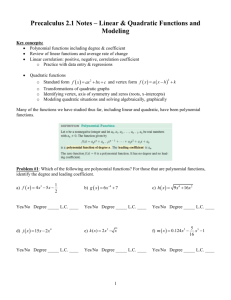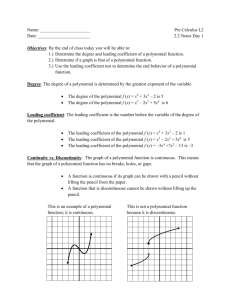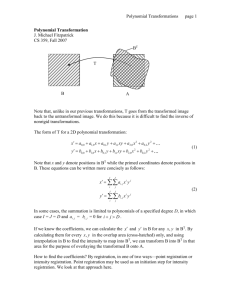D5 - Finite Differences
advertisement
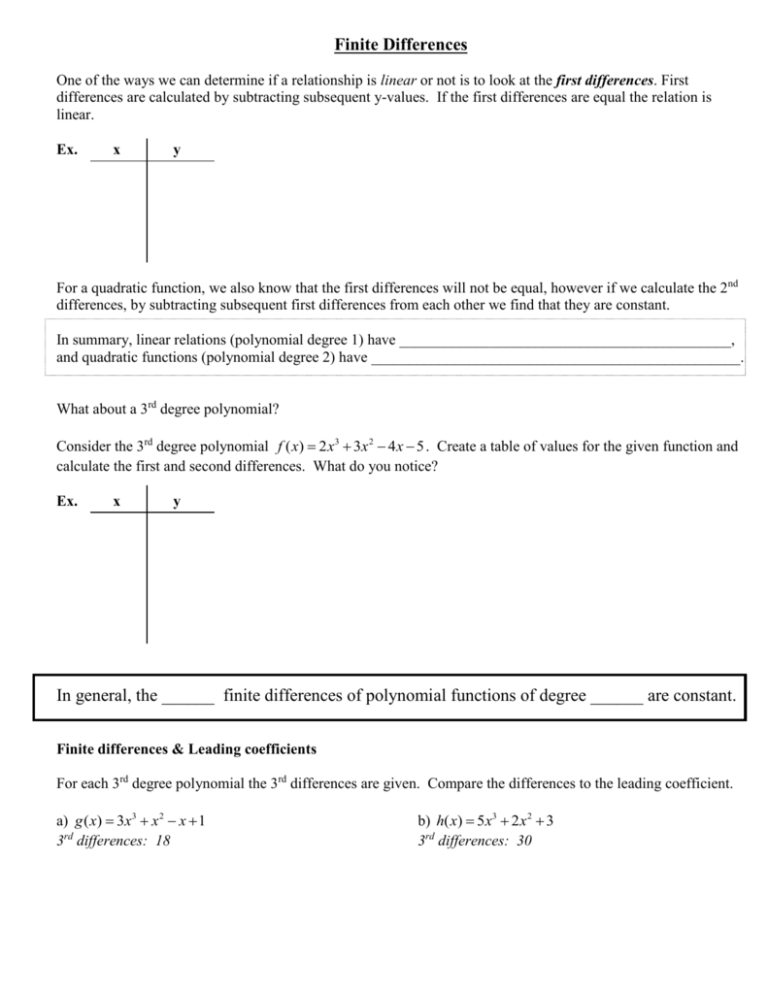
Finite Differences One of the ways we can determine if a relationship is linear or not is to look at the first differences. First differences are calculated by subtracting subsequent y-values. If the first differences are equal the relation is linear. Ex. x y For a quadratic function, we also know that the first differences will not be equal, however if we calculate the 2nd differences, by subtracting subsequent first differences from each other we find that they are constant. In summary, linear relations (polynomial degree 1) have ____________________________________________, and quadratic functions (polynomial degree 2) have _________________________________________________. What about a 3rd degree polynomial? Consider the 3rd degree polynomial f ( x) 2 x3 3x 2 4 x 5 . Create a table of values for the given function and calculate the first and second differences. What do you notice? Ex. x y In general, the ______ finite differences of polynomial functions of degree ______ are constant. Finite differences & Leading coefficients For each 3rd degree polynomial the 3rd differences are given. Compare the differences to the leading coefficient. a) g ( x) 3x3 x 2 x 1 3rd differences: 18 b) h( x) 5x3 2 x 2 3 3rd differences: 30 Explore Finite Differences with the Graphing Calculators In general: The 3rd finite differences of polynomial functions of degree 3 are related to the leading coefficient by a factor of ______________. The 4th finite differences of polynomial functions of degree 4 are related to the leading coefficient by a factor of ______________________. Ex. 1 Determine the type of function defined by the table below. What is the leading coefficient? Ex. 2 The polynomial ax3 + 2x2 - 3x + 11 has a third difference -30. What is the value of a?
